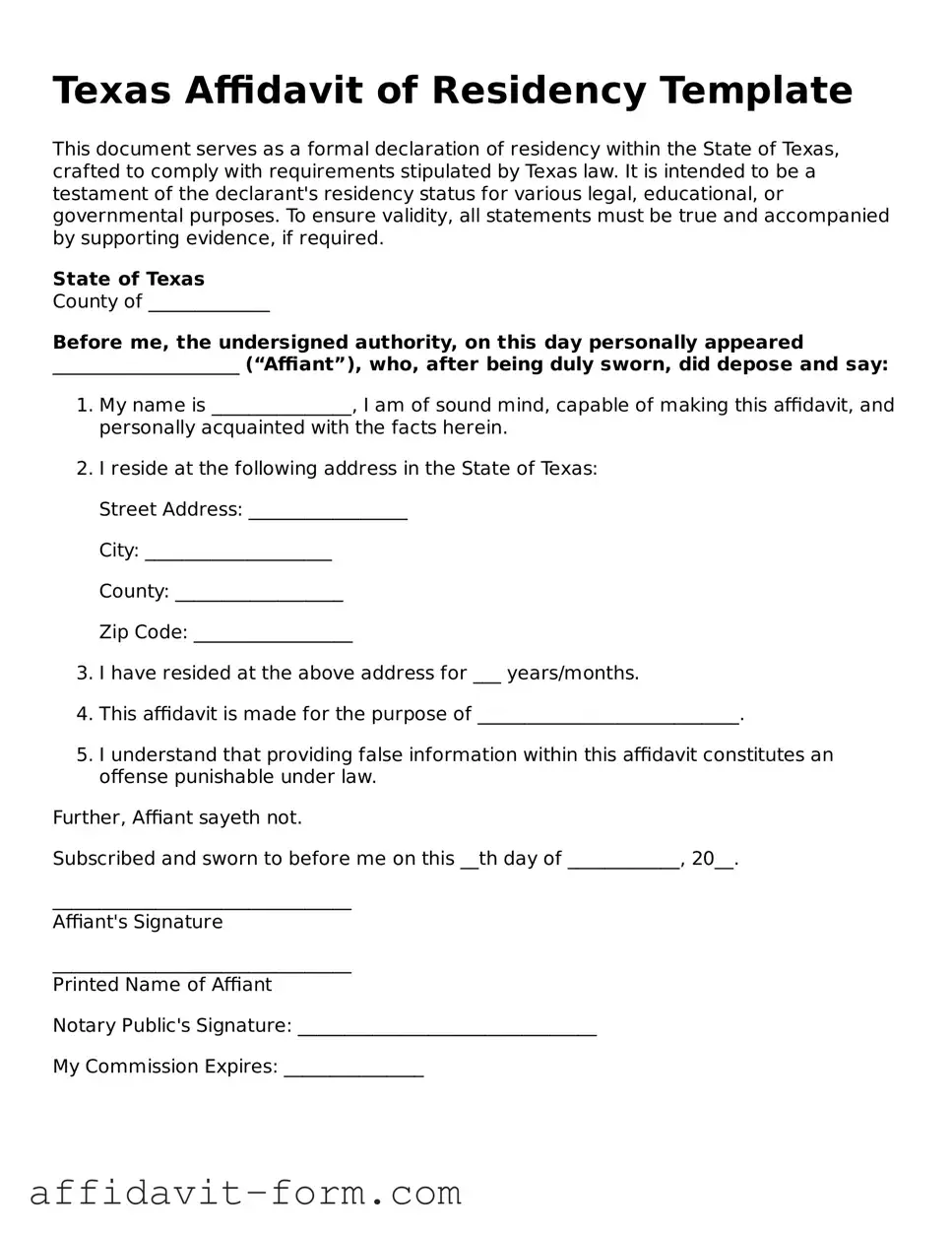Texas Affidavit of Residency Template
This document serves as a formal declaration of residency within the State of Texas, crafted to comply with requirements stipulated by Texas law. It is intended to be a testament of the declarant's residency status for various legal, educational, or governmental purposes. To ensure validity, all statements must be true and accompanied by supporting evidence, if required.
State of Texas
County of _____________
Before me, the undersigned authority, on this day personally appeared ____________________ (“Affiant”), who, after being duly sworn, did depose and say:
-
My name is _______________, I am of sound mind, capable of making this affidavit, and personally acquainted with the facts herein.
-
I reside at the following address in the State of Texas:
Street Address: _________________
City: ____________________
County: __________________
Zip Code: _________________
-
I have resided at the above address for ___ years/months.
-
This affidavit is made for the purpose of ____________________________.
-
I understand that providing false information within this affidavit constitutes an offense punishable under law.
Further, Affiant sayeth not.
Subscribed and sworn to before me on this __th day of ____________, 20__.
________________________________
Affiant's Signature
________________________________
Printed Name of Affiant
Notary Public's Signature: ________________________________
My Commission Expires: _______________
